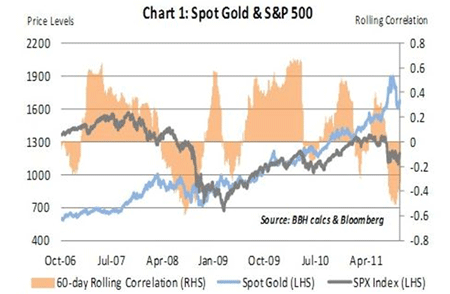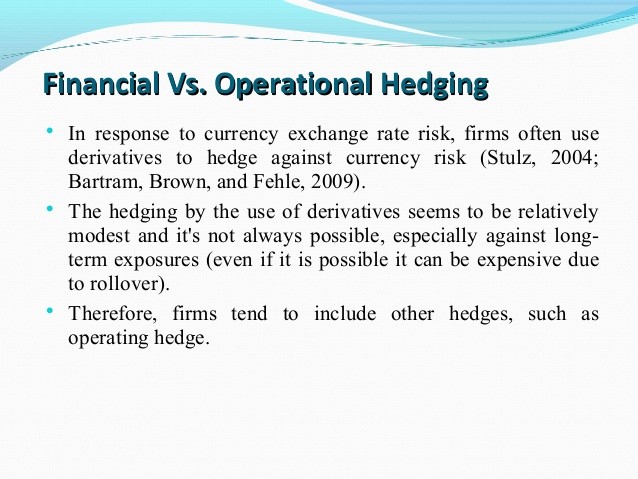Term Paper on Hedging Against Currency Risk
Post on: 14 Август, 2015 No Comment

As the world moves on becoming a global village and a single market place, still significant differences exist across the borders for trade to be classified anything but free. It will take quite sometime before we are truly to see the effects of globalization. Giant Conglomerates and huge Multi National Corporations (MNCS) which operate across international boundaries with revenues sometimes more than a nations GDP are the fore runners in advocating a more expansive trading strategy as reaching out to as many people as possible increases their profit and ultimately shareholder value. Foreign investment either in securities or in other enterprises be it subsidiaries, associates, Joint Ventures, etc gives rise to several kinds of risk for a company and the larger a company the larger those risks are. Risks are of several types i.e. credit risk, market risk, interest rate risk, currency risk, etc. Risk Management can be defined as The process of analyzing exposure to risk and determining how to best handle such exposure. Effective operation of cash and treasury management entails that risks of any form be mitigated to offset against losses in the areas in which the company operates locally as well as internationally. Therefore, it is imperative that Risk Management Strategies be adopted and be monitored to contain the volatility in international markets.
How Currency Fluctuations Affect International Investments
For a U.S. based MNC, a currency gain arises when the value of the dollar falls against the currency in which a foreign security is denominated. An appreciation of the dollar against the foreign currency could result in a loss regardless of how well the foreign security performed. For example, assume stocks of a particular foreign company gained 10% in market value from January 2000 to December 2001, but that the U.S. dollar appreciated 7.6% against this foreign currency during this time period. Your return in terms of dollars for this period would be only 2.2%.
In addition to direct impacts of currency fluctuations, there are also indirect impacts. For example, a surging U.S. dollar against the Japanese yen would cut demand for some American products and increase demand for some Japanese products. This would help increase the competitiveness of some Japanese companies, particularly those export-oriented companies. On the other hand, a weakening of the dollar against the yen could negatively impact some export-driven Japanese companies, especially those with a large presence in the American marketplace. These Japanese companies’ stock prices might be depressed, but there would be gains arising from the conversion of the U.S. dollar into the yen. Upcoming trends in the currency world can also affect currency fluctuations in new and unpredicted ways. For example, the long-awaited introduction in 2000 of a single euro currency shared by 12 European nations was greeted by projections that the currency would strengthen. But by the close of 2001, the euro remained below par with the dollar, thanks to a variety of economic and political factors throughout Europe.
Risk Management Strategies
There are different strategies for managing a portfolio’s foreign currency exposure, which fall into three broad categories of using hedging tools to protect against currency losses. The simplest approach adopted by international portfolio managers and investors is not to hedge the currency risks at all. Some argue that there is a correlation between the performance of a foreign equity market and strength of the foreign currency: Others believe that currency fluctuations tend to smooth out over an extended period of time. Neither of these arguments, however, can be proven conclusively, although there is practical evidence to support each of them. Another argument supporting the non-hedging approach is that foreign currency exposure helps diversify a portfolio.
In contrast to the non-hedging approach, some fund managers go to the other extreme and hedge 100% of their currency exposures. They believe that foreign exchange rates are highly unpredictable and that currency risks in foreign currency denominated securities should always be fully hedged. In theory, an international investment portfolio would become a pure equity or fixed-income play, free of currency risk, if the foreign currency exposures of the portfolio were fully hedged.

The key argument for hedging is that it reduces a portfolio’s volatility resulting from currency fluctuation. But hedging costs tend to reduce overall returns over time, compared with an unhedged portfolio. Balancing the pros and cons of hedging; the third strategy falls somewhere between the two extremes. Fund managers who use an actively managed hedging approach hedge selectively: sometimes no hedge, sometimes a partial hedge, and sometimes a full hedge. The selective approach is gaining in popularity. Most investment firms now offer some kind of currency service, and some firms with substantial international investments even appoint a separate manager to handle currency as a distinct asset class.
Conclusion
Currency risk is an integral element of international finance and is only one risk of investing across borders. Therefore for companies seeking higher returns from overseas markets, it is important to understand how currency risk could affect returns.
Summarizing, it becomes all the more important to apply risk management strategies in the contest of a MNC basically to spread or diversify risk portfolio and hedging strategies are the best way of achieving this risk diversification. Arguing for a balanced hedging strategy is the best way to go about mitigating the different volatilities existing in international commerce. If this is not done who knows that a 10% return on foreign investment (or a gain on purchase of imported raw material) is wiped out by a 12% appreciation of the reporting enterprise currency against the currency in which foreign investment is made or foreign transactions are conducted.














